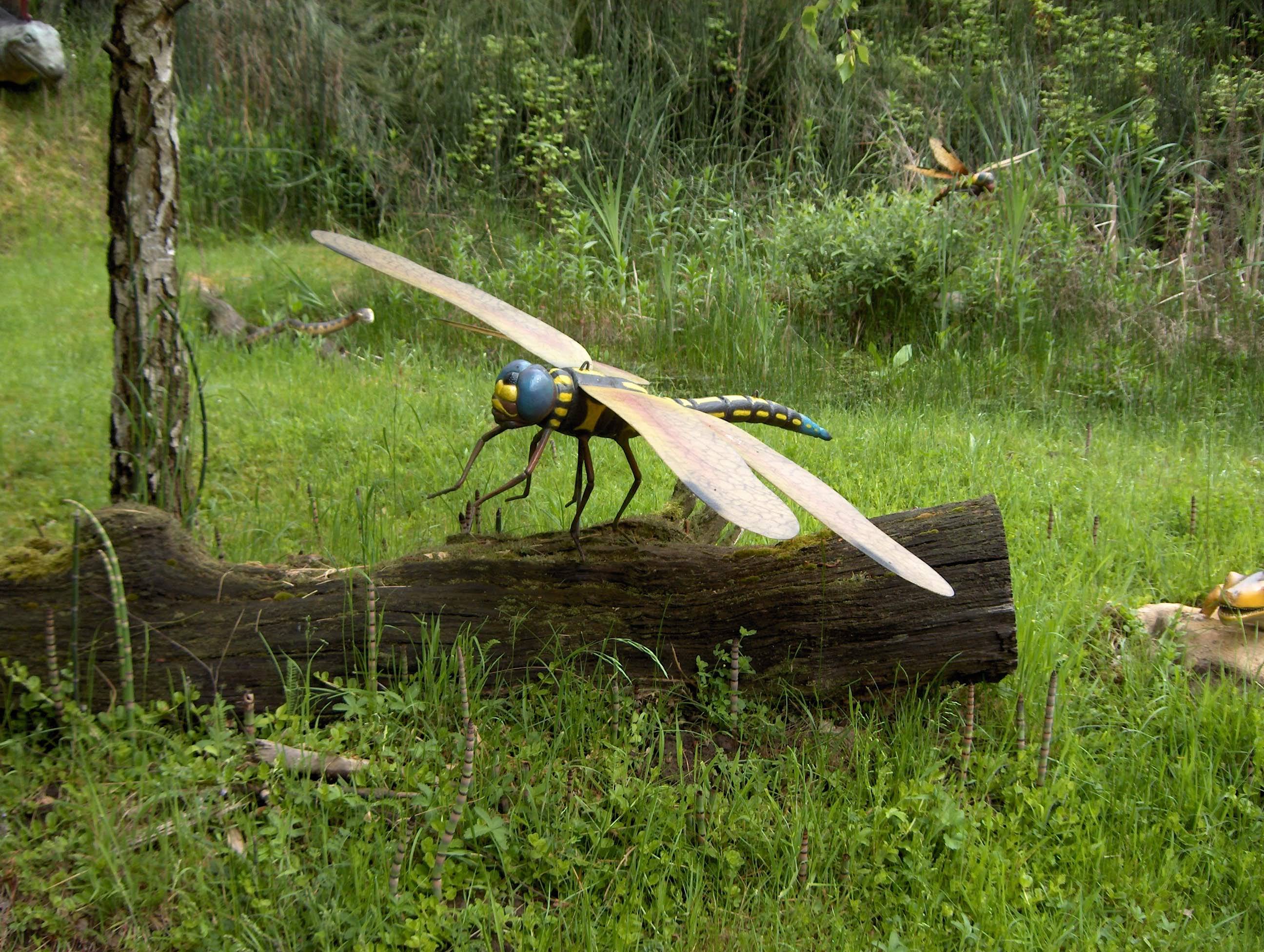It will depend on the conditions of the planet they live in. You see, insects breathe through a system of tracheas without the help of their circulatory system, meaning the oxygen goes from the tracheas straight to the tissues, allowing them to keep constantly oxygenated tissues and perform activities such as their fast movements and, of course, flight. The main issue to this system, however, is that this severely limits the maximum size of the insect according to the levels of oxygen available in the air. That's the reason why, in prehistoric earth, when oxygen levels were much higher, we could have 2 meter long centipedes and dragonflies which were around the size of modern crows. So, based on our own planet and the largest dragonfly that ever existed , your bugs could have a wingspan of around 2 ft (75 cm) and weight as much as 450 grams. Considering dragonflies already have very complex eyes and wing system, being the most successful predators of the modern era, with a 97% success rate when hunting), we can see that they already have a decently developed brain for an insect.
So, regarding size, your insect can grow to at least the size of a crow, maybe even larger depending on how dense is your atmosphere and how much oxygen is available in the air. Regarding shape however, I honestly think they'd look more like something between an insect and a human than a humanoid with an exoskeleton, as the dragonfly is shaped to be a fast and agile hunter. I'd expect them to maybe gain longer legs, starting to use only the two last pairs for overall locomotion, as well as other changes such as adopting the ability to fold their wings like their damselfly cousins so they don't occupy as much space and both sexes developing claspers, which could adapt to handling functions rather than just serving for the males to hold the females in place , but that's entirely up to you.

Now, regarding the brain. Dragonflies, with their independent wing control (they're each controlled separately basically, which grants them their great maneuverability) and complex eyes already indicate more well developed brains. However, it'd be very hard for an insect to develop complex thinking like we see in humans, as their brains are much simpler and smaller. That is not to say, however, that they're dumb, as they've been shown to be able to plan and memorize. They will need to go through a decent level of development to reach a more complex level that enables intelligence though, based on our own insects. The presence of a pack behavior could help reach such levels, as well as some level of emotion and empathy (insects as we know them are completely incapable of emotion or empathy, meaning that unless your race develops these abilities, they'll be essentially a race of psychopaths by our standards, with little to no concern for one another, unless they develop some sort of instinct to protect the other members of its species). Additionally, they do have the advantage of having ganglia that control vital functions, meaning that their main brains could, without too much of a stretch, become larger and more specialized to handle higher functions such as more complex thinking and understanding complex concepts, such as the passage of time and the awareness of their death. I recommend taking a look at this to get a better understanding of how insect brains work. It also strengthens my point that they'd likely have evolved from a group of arthropod-like pack hunters.
So, summing up: how big can they grow? Depends a lot on the environment they live in, but with the proper oxygen levels, they can be at least as big as a small crow. Can they have moderate intelligence? Very likely, as they have not only good oxygenation of nervous tissue, but various ganglia across their bodies handling vital functions, which could allow their main brains to specialize further in order to grant them moderate intelligence. Though I don't think they'd have the complexity of our brains, they'd likely be capable of making long and short term plans, making ambushes and traps, understanding abstract concepts and symbols and living in a community at the very least, as most of these abilities can already be seen to some extent amount various arthropods. Overall, their larger size would also allow for larger brains and therefore greater potential at becoming smarter, but I don't find it likely that they'd be too engaged in things such as tool using, not. Meaning however that there's no chance that they could.


